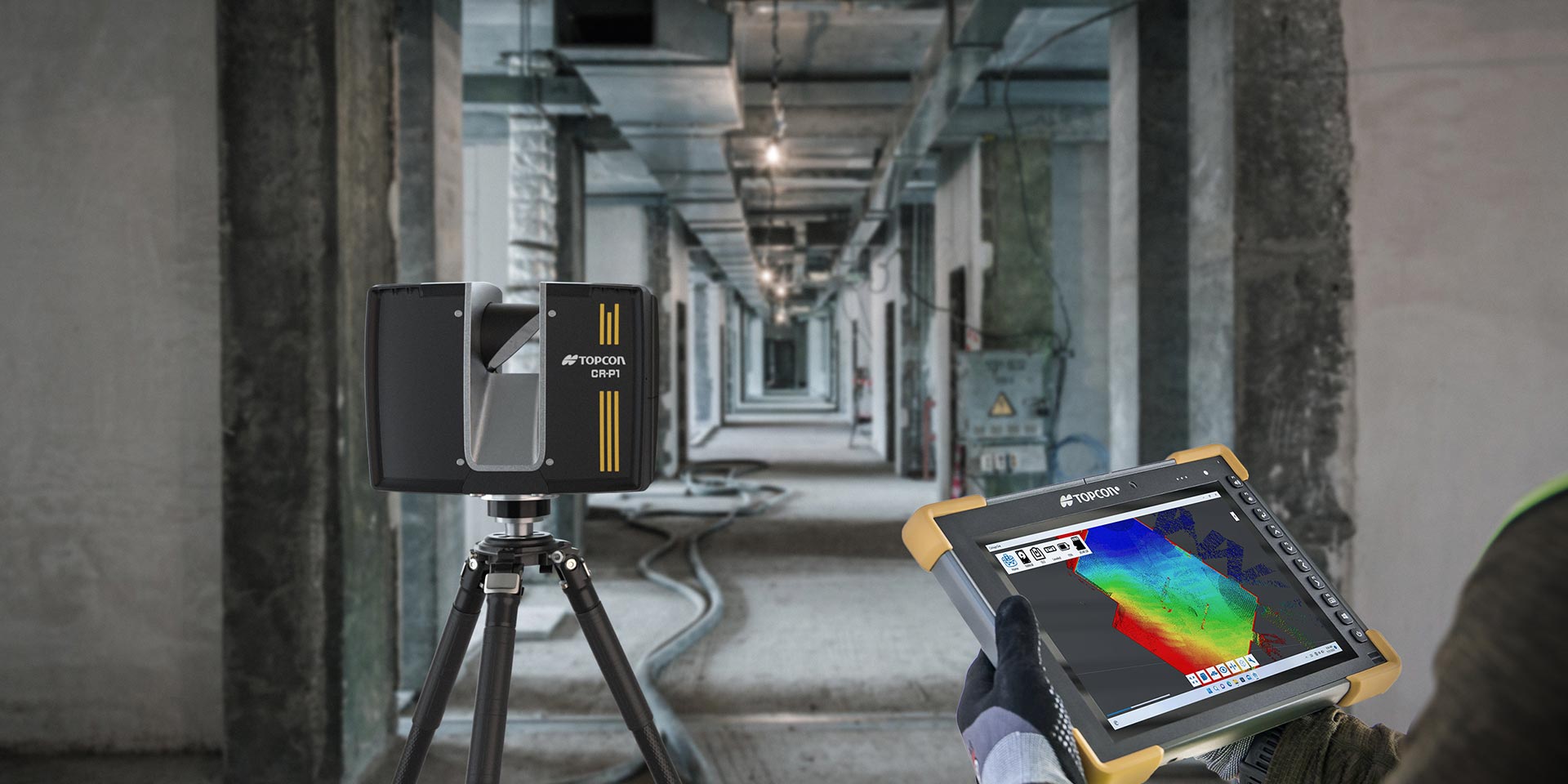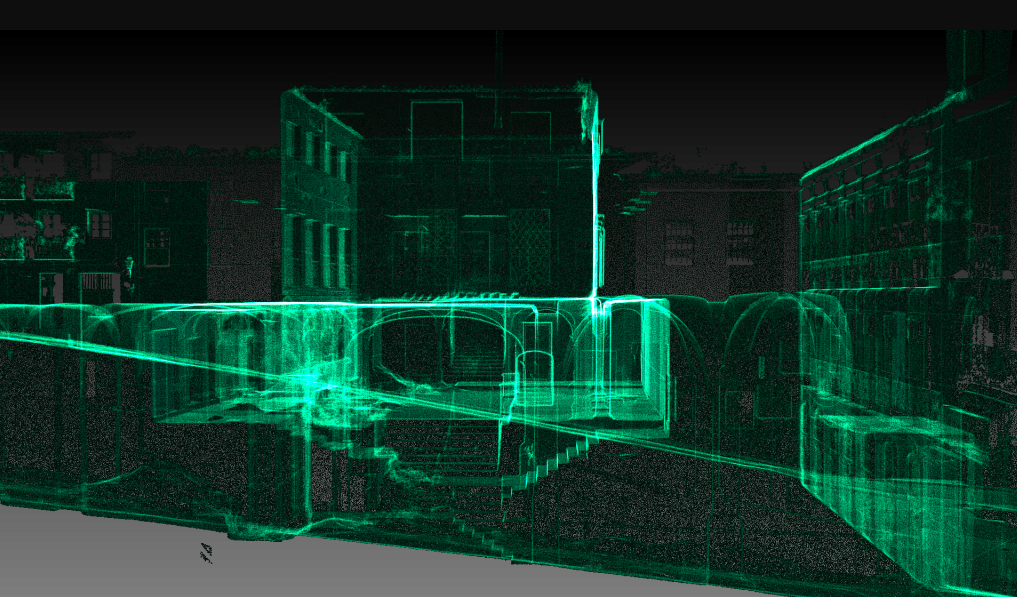Checking out the Applications of 3D Laser Scanning in Archaeology and Cultural Heritage Conservation
The combination of 3D laser scanning innovation in archaeology and social heritage preservation marks a considerable improvement in exactly how archaeological sites and artifacts are recorded and examined. This non-invasive approach provides precise spatial information, disclosing complex details that were previously difficult to capture. As the applications of this technology remain to progress, numerous ramifications for education, conservation, and documentation arise, inviting additional expedition right into its transformative impact on the field.
Understanding 3D Laser Scanning Technology
3D laser scanning modern technology has actually transformed the field of archaeology by supplying precise and in-depth spatial information. This advanced innovation uses laser beams to catch millions of information factors from an item or website, developing a very precise three-dimensional depiction (3D Scanning). The resulting point clouds can disclose detailed details of archaeological sites, frameworks, and artifacts that may be unnoticeable to the naked eye
Using this innovation, excavators can document the exact measurements, forms, and placements of things with unprecedented accuracy. This approach lessens the danger of human error and eliminates the need for considerable hands-on dimensions. The information gathered can be examined and shared conveniently, helping with cooperation amongst scientists. By integrating 3D laser scanning with GIS and various other electronic devices, archaeologists enhance their capacity to picture and interpret historical contexts, causing much deeper insights right into old societies and atmospheres.
Enhancing Archaeological Documents
3D laser scanning significantly enhances historical documentation through its capability to develop precise website maps. This innovation assists in in-depth artefact evaluation, providing insights that traditional techniques might ignore. In addition, it assures the conservation of contextual information, which is vital for comprehending the connections within historical sites.
Precise Website Mapping
While conventional mapping approaches frequently have problem with recording the intricate details of historical sites, advanced laser scanning modern technology uses an innovative technique to accurate website mapping. This approach allows excavators to create extremely detailed and specific three-dimensional depictions of sites, showcasing topographical variants and structural functions with exceptional fidelity. The capability to record countless information points in an issue of mins enables thorough documentation, which can be quickly updated and shared amongst researchers. Furthermore, laser scanning promotes the measurement of intricate geometries that would be tough to evaluate utilizing traditional devices. Therefore, this technology boosts the accuracy of site maps, adding significantly to the preservation and understanding of social heritage sources.
Detailed Artifact Analysis
Laser scanning technology significantly improves the evaluation of historical artefacts, providing researchers with extraordinary detail and precision. This approach captures complex surface area structures, dimensions, and features that typical paperwork methods may forget. By producing high-resolution 3D designs, scholars can carefully take a look at artefacts without the risk of damage fundamental in physical handling. This precision allows for better relative research studies, making it possible for specialists to recognize manufacturing methods, stylistic variants, and possible social significance. Moreover, the ability to manipulate and imagine information in three measurements helps with a deeper understanding of artifact functionality and usage. Overall, laser scanning fosters a much more extensive approach to historical paperwork, guaranteeing that essential details regarding artefacts is maintained for future research study and education.
Conservation of Contextual Information
Protecting contextual data is crucial for boosting archaeological documents, as it assures that findings are recognized within their original environmental and cultural frameworks. 3D laser scanning technology considerably contributes to this conservation initiative by recording detailed spatial relationships among artefacts, structures, and their atmospheres. By creating accurate 3D versions, archaeologists can record the exact places and positionings of items in situ, helping with a thorough understanding of their context. This technology allows researchers to review and analyze websites long after excavation, keeping the stability of contextual info. In addition, electronic records produced with scanning can be shared globally, promoting joint research and public engagement. Eventually, maintaining contextual information via 3D laser scanning enhances historical narratives and advertises a more profound recognition of social heritage.
Conservation of Cultural Heritage Sites
As improvements in modern technology remain to evolve, the preservation of cultural heritage sites has actually ended up being increasingly reliant on ingenious approaches such as 3D laser scanning. This technology enables for the comprehensive documents of structures, artifacts, and landscapes, capturing their accurate measurements and spatial partnerships in a non-invasive manner. By creating high-resolution 3D designs, researchers can monitor and analyze wear and tear patterns, enabling positive conservation strategies.
Furthermore, 3D laser scanning assists in the sharing of thorough website data with the global community, promoting cooperation amongst historians, conservationists, and archaeologists. These designs work as indispensable resources for education and public engagement, increasing awareness of cultural heritage issues. Moreover, the digital records produced can protect versus loss as a result of environmental elements, criminal damage, or neglect. Generally, 3D laser scanning stands for a transformative technique to the conservation of social heritage, making certain that these websites can be researched and valued by future generations.

Remediation and Repair Efforts
The detailed documents achieved with 3D laser scanning plays a substantial function in restoration and reconstruction initiatives within archaeology. This modern technology supplies exact measurements and high-resolution click imagery, allowing for accurate electronic versions of structures and artefacts. These versions act as important references throughout remediation procedures, allowing archaeologists to make and envision the original design informed choices concerning products and strategies required for repair.
3D laser scanning facilitates the restoration of damaged or lost elements by developing in-depth reproductions. This procedure help in making certain that restorations maintain historical honesty while additionally enabling cutting-edge strategies to recover websites. The ability to examine wear patterns and structural weaknesses with scanned data boosts understanding of a site's historic context and its use with time. Subsequently, 3D laser scanning not just protects the physical elements of cultural heritage yet additionally enhances the narrative of history, leading future remediation endeavors.
Educational and Research Opportunities
The assimilation of 3D laser scanning in archaeology opens up substantial educational and research opportunities. Academic cooperations can improve the understanding of ancient websites, while specialized training workshops furnish professionals with important abilities for utilizing this technology. With each other, these initiatives cultivate a richer interaction with archaeological techniques and approaches.
Academic Collaborations in Archaeology
Collaborative initiatives in archaeology have ended up being progressively essential for progressing both educational and research chances. By fostering collaborations among universities, research study institutions, and social heritage organizations, these partnerships facilitate the exchange of understanding and sources, improving the top quality of historical researches. Joint projects usually take advantage of varied competence, enabling cutting-edge methodologies and complete analyses, specifically in the application of technologies like 3D laser scanning. Such partnerships additionally advertise interdisciplinary approaches, engaging fields such as location, background, and conservation science. Additionally, academic partnerships commonly bring about the development of brand-new curricula and training programs, preparing the future generation of excavators to properly make use of advanced technologies in their work. Inevitably, these alliances contribute to the preservation and understanding of cultural heritage.
Educating Workshops for Experts
Training workshops for experts in archaeology are significantly important for enhancing skills in the application of innovative modern technologies such as 3D laser scanning. These workshops give individuals with hands-on experience in using advanced devices and software application, promoting a deeper understanding of data capture and evaluation processes. Experts can learn to develop precise digital versions of historical sites, which noticeably aid in documentation and conservation initiatives. Additionally, these training sessions often consist of discussions on finest methods and study, advertising expertise exchange among individuals. By buying continual education check these guys out and learning, professionals can remain updated on evolving innovations, ultimately boosting the performance of their research study and social heritage preservation initiatives. This commitment to ability enhancement is necessary for progressing the field of archaeology.
Future Fads in 3D Laser Scanning for Archaeology
As developments in modern technology continue to improve various areas, the future of 3D laser scanning in archaeology assures to boost both the precision and effectiveness of website documentation and evaluation. Arising trends suggest an expanding assimilation of expert system and artificial intelligence, facilitating automated data handling and analysis. This advancement will enable excavators to analyze complicated datasets extra quickly, resulting in faster understandings into historic contexts.
Furthermore, the combination of drone modern technology with 3D laser scanning is most likely to increase, enabling complete aerial surveys of archaeological websites that are hard to access. The boosting price of scanning tools will equalize accessibility, encouraging smaller establishments and independent scientists to make use of these devices successfully. Additionally, improvements in digital reality and augmented reality will enable immersive experiences for public engagement and education, making archaeological findings a lot more interactive and obtainable. These fads jointly indicate a transformative future for archaeology, boosting preservation efforts and increasing the technique's outreach.
Often Asked Concerns
How Much Does 3D Laser Scanning Equipment Cost?

What Are the Limitations of 3D Laser Scanning?
The limitations of 3D laser scanning include high costs, potential data handling challenges, sensitivity to ecological problems, and trouble capturing elaborate details in intricate surface areas, which can impact the accuracy and completeness of scanned depictions. (3D Scanning)

Can 3D Laser Scanning Be Used Undersea?
Yes, 3D laser scanning can be used underwater, however it requires specialized tools and methods to overcome obstacles such as water distortion and limited presence. Effective applications have been shown in marine archaeology and undersea surveys.
How Lengthy Does a Scanning Project Normally Take?
A scanning project typically takes anywhere from a few days to numerous weeks, depending upon the complexity and dimension of the location being scanned, together with the preparation and post-processing demands associated with the job.
Are There Certain Software Demands for Processing 3D Scans?
Yes, particular software program demands for refining 3D scans include programs efficient in taking care of big factor clouds, such as Autodesk ReCap, Cyclone, or MeshLab. These devices help with analysis, visualization, and combination into different applications successfully.
The integration of 3D laser scanning modern technology in archaeology and social heritage conservation marks a substantial advancement in exactly how historic sites and artifacts are recorded and assessed. 3D laser scanning technology has actually transformed the area of archaeology by giving thorough and precise spatial data. As improvements in technology continue to develop, the conservation of social heritage websites has actually ended up being significantly dependent on visit homepage innovative techniques such as 3D laser scanning. As innovations in technology continue to reshape various areas, the future of 3D laser scanning in archaeology promises to enhance both the precision and efficiency of site paperwork and evaluation. The combination of drone innovation with 3D laser scanning is most likely to increase, making it possible for thorough aerial studies of historical sites that are challenging to gain access to.